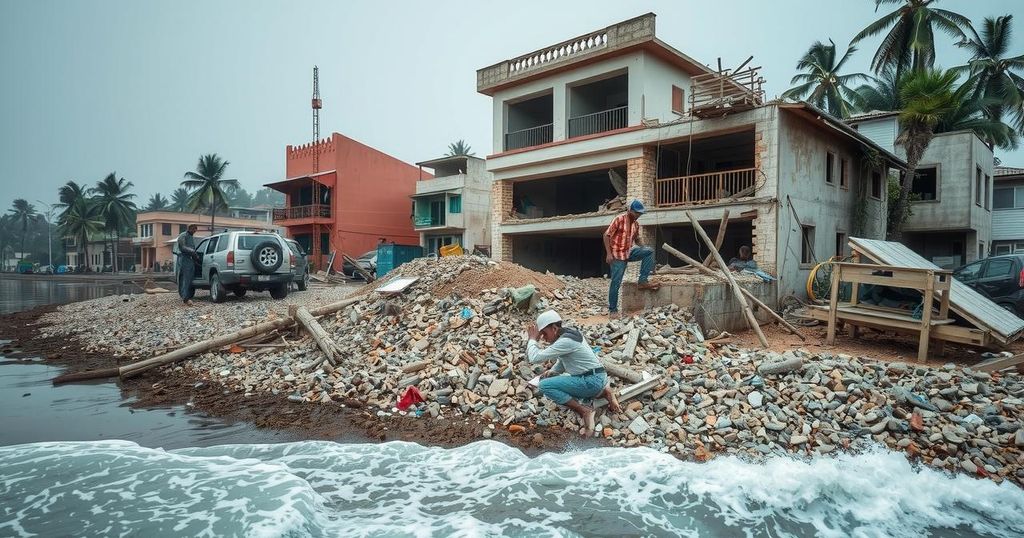Two Decades Later: The Lasting Impact of the 2004 Tsunami on Tamil Nadu

The December 26, 2004, tsunami, triggered by a 9.1 magnitude earthquake, left indelible scars on Indian communities, particularly in Tamil Nadu, where survivors like Yusuf Ansari and Jaya reflect on the devastation. Despite significant reconstruction efforts, the emotional ramifications of the disaster continue to haunt many, highlighting the enduring legacy of this tragedy.
On December 26, 2004, a seismic event of colossal proportions struck, leading to the deadly tsunami that profoundly impacted the Indian coastline, particularly in Tamil Nadu. Yusuf Ansari, now a 32-year-old motor rickshaw driver, vividly recalls that day when he was a young boy playing cricket on the beach. “Out of nowhere, we saw a boat tossed by the waves, followed by a massive rush of dark water,” he described, highlighting the chaos that ensued as locals scrambled for higher ground. This tragic event was triggered by a magnitude 9.1 earthquake near Sumatra island, resulting in immense loss of life and property across a wide area, with approximately 230,000 individuals perishing across a range of affected nations, including India.
Reflecting on the aftermath, Jaya, a 44-year-old resident, recounts the panic that engulfed her family as she watched her children play near the shore while her husband was fishing. “At first, no one understood what was happening. The water turned dark, and waves started rising higher and higher,” she noted poignantly.
In response to this disaster, the Tamil Nadu government initiated extensive rehabilitation efforts with support from international institutions such as the Asian Development Bank and the World Bank. The reconstruction phase included the construction of improved housing equipped with essential amenities like street lighting, electricity, and sanitation facilities. In Velankanni town, a dedicated memorial tower was erected to honor the victims, serving as a solemn reminder of the tragedy. Despite these improvements, the scars from that fateful day remain deeply etched in the memories of survivors.
Twenty years later, the effects of the tsunami linger among the residents, particularly fishermen who have witnessed the coastline’s erosion despite governmental measures. Kuppi Ratnam, a local fisherman, expressed concern over the declining effectiveness of sand embankments designed for protection. “The stones don’t hold up anymore, and the sand keeps washing away,” he lamented. Furthermore, while many families received government-built housing, some were unable to return to their homes due to the traumatic memories intertwined with those locations. Thus, the haunting impact of the tsunami continues to thread through the lives of many in this region.
The December 26, 2004 tsunami, triggered by a massive 9.1 magnitude earthquake near Sumatra, Indonesia, had sweeping repercussions across the Indian Ocean, devastating numerous coastal communities. In India, particularly in Tamil Nadu, the earthquake and subsequent tsunami altered the lives of many residents. This disaster not only resulted in a tragic loss of life—over 10,700 fatalities in India alone—but also rendered thousands homeless. The Southern Indian coastal region has since been focused on rehabilitation, reconstruction, and memorialization.
The enduring impact of the 2004 tsunami remains vividly alive in the memories of those who experienced it firsthand. As evident from testimonies of survivors like Yusuf Ansari and Jaya, the anguish of that day is intrinsic to their life narratives. While significant efforts have been made towards recovery and remembrance, the emotional and psychological scars endure, considerably affecting the community’s ability to fully heal and move on from such a profound tragedy.
Original Source: www.mymotherlode.com





